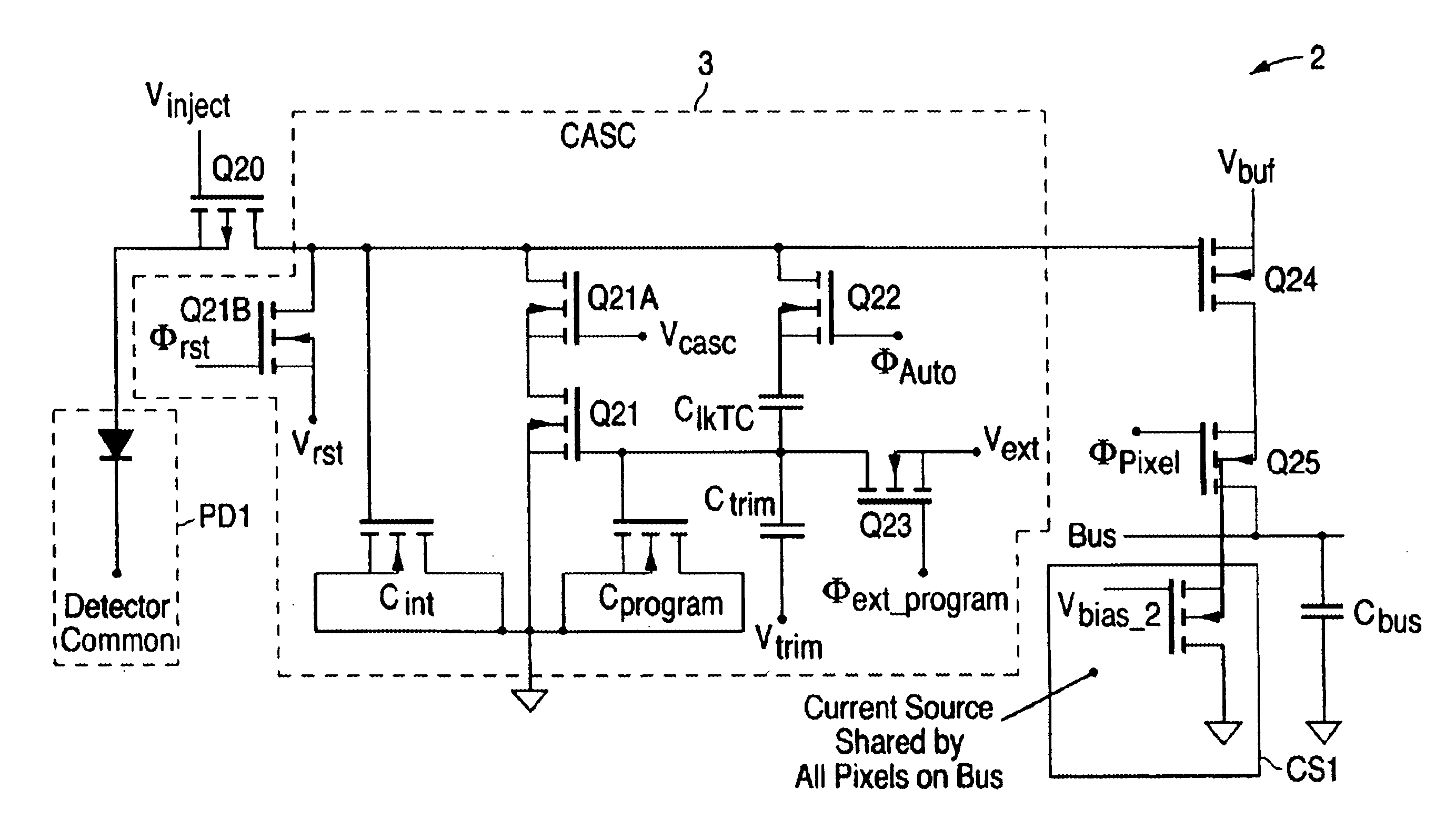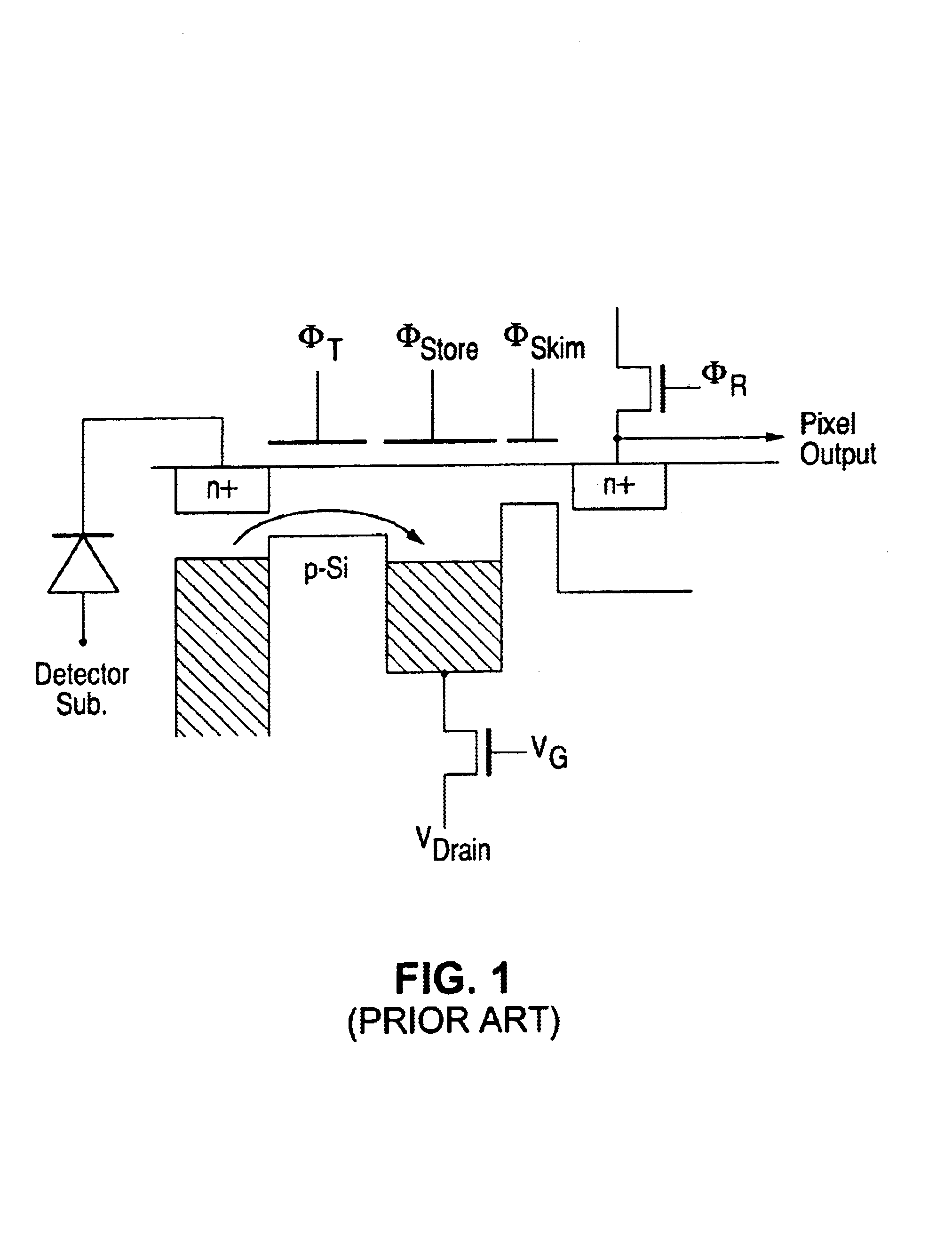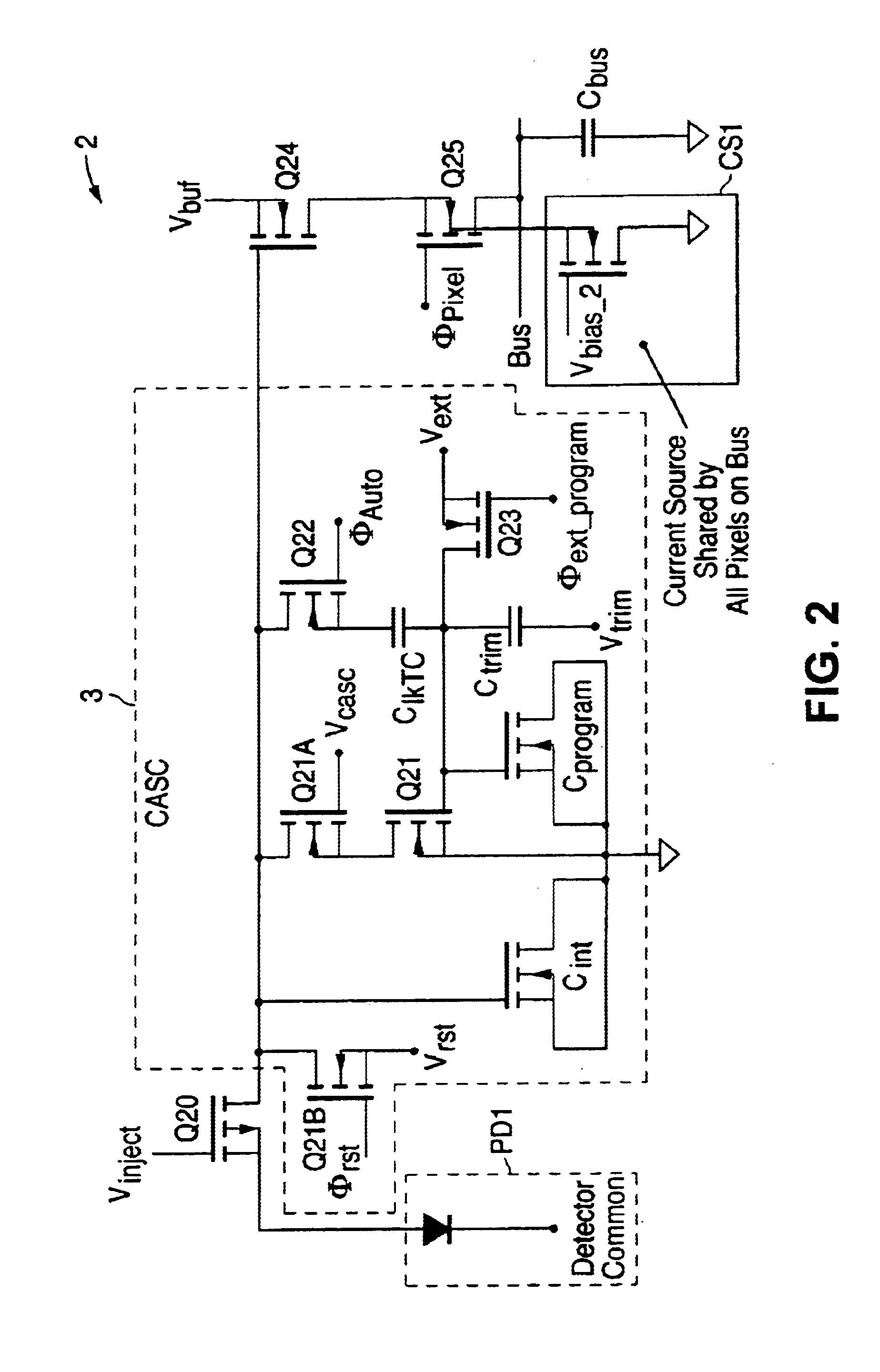Self-adjusting, adaptive, minimal noise input amplifier circuit
- Summary
- Abstract
- Description
- Claims
- Application Information
AI Technical Summary
Benefits of technology
Problems solved by technology
Method used
Image
Examples
first embodiment
the present invention is shown in FIG. 2. The amplifier circuit 2 comprises a detector PD1 that is directly coupled to the source of an input transistor Q20. The gate of Q20 is adjusted to set the detector bias and the source of Q20 is modulated by the photo-generated signal from PD1. Minority carriers are injected into an integration capacitor Cint where they are accumulated for subsequent readout. This integration capacitor can be reset by a transistor Q21B to an initial voltage Vstore that may even be a large external voltage as taught by U.S. Pat. No. 6,064,431, noted above, or it may be generated on chip. Alternately, other variants can have the integration capacitor tied to a common level or ground.
To enhance the effective integration capacity, the integration capacitor Cint is connected to a self-adjusting current source comprising transistor Q21 (preferably cascoded with transistor Q21A to prevent undesirable parasitic coupling from Cint to the gate of Q21), a programming ca...
PUM
 Login to View More
Login to View More Abstract
Description
Claims
Application Information
 Login to View More
Login to View More - R&D
- Intellectual Property
- Life Sciences
- Materials
- Tech Scout
- Unparalleled Data Quality
- Higher Quality Content
- 60% Fewer Hallucinations
Browse by: Latest US Patents, China's latest patents, Technical Efficacy Thesaurus, Application Domain, Technology Topic, Popular Technical Reports.
© 2025 PatSnap. All rights reserved.Legal|Privacy policy|Modern Slavery Act Transparency Statement|Sitemap|About US| Contact US: help@patsnap.com



